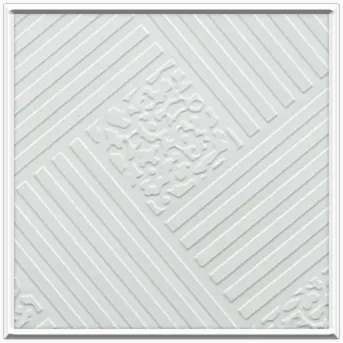Dec . 16, 2024 09:44 Back to list
laminated gypsum board
Laminated Gypsum Board A Modern Construction Solution
Laminated gypsum board, often referred to as drywall or gypsum panels, is becoming increasingly popular in the construction and interior design industries. This versatile building material combines the benefits of standard gypsum board with an added layer of laminate, making it a favored choice for various applications. In this article, we will explore the features, advantages, applications, and the future of laminated gypsum board.
Features of Laminated Gypsum Board
Laminated gypsum board is made of a core composed of gypsum plaster, sandwiched between two rigid sheets of heavy paper or, in the case of laminated varieties, a plastic or other high-performance surface material. This combination results in a sturdy board that exhibits enhanced durability and aesthetic appeal. One of the most significant features of laminated gypsum board is its ability to provide a smooth and clean surface that is ready for painting, wallpapering, or any other finishing treatment.
The laminate layer offers an extra defense against moisture, stains, and impacts, making it ideal for high-traffic areas or spaces prone to dampness, such as kitchens and bathrooms. Furthermore, laminated gypsum boards also come in various textures and colors, allowing for greater design flexibility and customization.
Advantages of Laminated Gypsum Board
One of the primary advantages of laminated gypsum board is its lightweight nature, which makes it easy to transport and install. This aspect reduces labor costs and time during the construction process. Additionally, laminated gypsum board provides excellent sound insulation properties, making it beneficial for residential properties, offices, and commercial buildings where privacy and noise control are high priorities.
Moreover, laminated gypsum board is fire-resistant due to its gypsum content, which does not ignite easily. This feature contributes to building safety and complies with various fire safety regulations. Another significant advantage is its eco-friendly nature. Gypsum is a natural mineral that is abundant in many parts of the world, and laminated boards can be manufactured with recycled materials. This sustainability aligns with today’s growing emphasis on green building practices.
laminated gypsum board

Applications of Laminated Gypsum Board
Laminated gypsum boards have a wide range of applications across different sectors. In residential construction, they are often used for interior walls and ceilings, providing a smooth finish ideal for aesthetic purposes. They are also used in partition walls, creating separate spaces within open areas, which is beneficial for modern living environments.
In commercial settings, laminated gypsum boards are used extensively in offices and retail spaces. Their sound-dampening qualities make them suitable for conference rooms, offices, and educational facilities, where effective acoustics are crucial for collaboration and communication. The ability to accommodate various finishes also makes them a preferred choice for high-end retail shops and restaurants looking to create an appealing atmosphere.
Furthermore, laminated gypsum boards can be used in healthcare facilities, where hygiene and cleanliness are paramount. Their resistance to moisture and stains makes them easy to clean and maintain, ensuring a safe and sterile environment.
The Future of Laminated Gypsum Board
The future of laminated gypsum board looks promising as the construction industry moves towards more sustainable and innovative building practices. With advancements in technology, manufacturers are continually developing new varieties of laminated boards that offer enhanced features, such as improved thermal insulation, greater moisture resistance, and advanced fire ratings.
As urbanization continues to rise, the demand for efficient and versatile building materials like laminated gypsum boards will likely increase. Moreover, the trend toward open-space living and multi-functional areas will further drive the adoption of laminated gypsum boards, as they provide the flexibility required in contemporary architecture.
In conclusion, laminated gypsum board represents a modern construction solution that combines aesthetic appeal with practical performance. Its wide range of applications, coupled with numerous advantages, makes it a staple in the building industry. As the focus on sustainability and innovation grows, laminated gypsum board is poised to play a significant role in shaping the future of construction and interior design.
-
Quality Ceiling Trap Doors & Access Panels | Easy & Secure AccessNewsAug.30,2025
-
Durable Ceiling T Grid Systems | Easy InstallationNewsAug.29,2025
-
PVC Gypsum Ceiling: Durable, Laminated Tiles for Modern SpacesNewsAug.28,2025
-
Pvc Gypsum Ceiling Is DurableNewsAug.21,2025
-
Mineral Fiber Board Is DurableNewsAug.21,2025
-
Ceiling Tile Clip Reusable DesignNewsAug.21,2025







